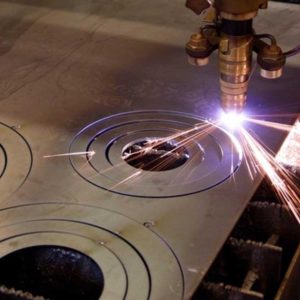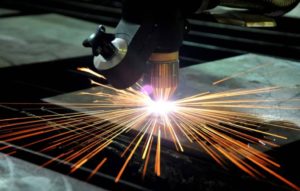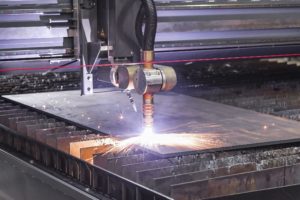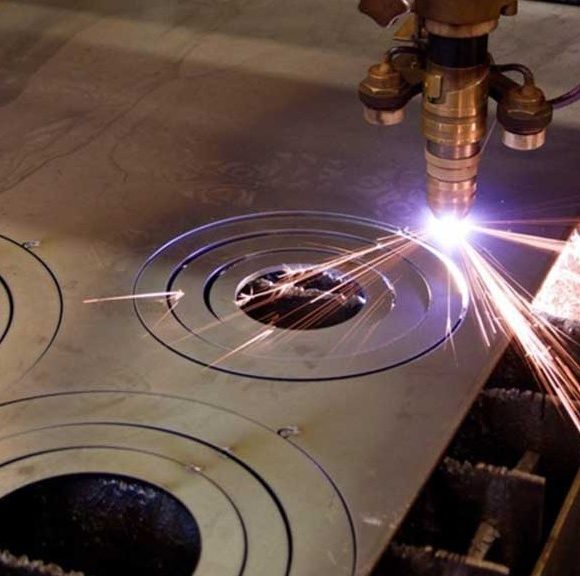Introduction:
In the realm of metal fabrication, laser cutting has emerged as a popular and highly efficient method for precision cutting. This advanced technique utilizes a concentrated beam of light to effortlessly slice through various types of metals, offering numerous advantages over traditional cutting methods. If you’re curious about laser cutting and its application in metalworking, read on to discover the essentials of this cutting-edge technology.


What is Laser Cutting?
Laser cutting is a non-contact process that employs a high-powered laser beam to melt, burn, or vaporize material, resulting in precise and accurate cuts. The laser beam is generated by amplifying light through stimulated emission of radiation (LASER). This intense beam is directed through a series of mirrors and focused onto the workpiece, creating a narrow, concentrated heat-affected zone. The focused laser energy rapidly heats the metal, causing it to melt or vaporize, enabling precise cutting along the predetermined path.
What Metals Can Be Laser Cut?
Laser cutting is versatile and can be used on a wide range of metals, including but not limited to:
- Stainless Steel: Laser cutting is highly effective for stainless steel due to its excellent reflectivity properties and high melting point.
- Aluminum: The reflective properties of aluminum require specific laser parameters for optimal cutting results.
- Carbon Steel: Laser cutting offers fast and accurate cutting of carbon steel sheets, making it a popular choice in various industries.
- Copper and Brass: Copper and brass can be laser cut, but they require higher laser power due to their high thermal conductivity.
- Titanium: Laser cutting is an effective method for intricate cutting of titanium alloys due to their strength and high melting point.

Advantages of Laser Cutting:
Laser cutting provides several advantages over traditional cutting methods, making it a preferred choice for many industries:
- Precision and Accuracy: Laser cutting offers exceptional precision, allowing for intricate designs and complex shapes with tight tolerances.
- Speed and Efficiency: Laser cutting is faster than many conventional cutting methods, enabling high productivity and reduced lead times.
- Versatility: Laser cutting is capable of cutting a wide range of metals with varying thicknesses, providing flexibility for diverse applications.
- Minimal Material Distortion: The concentrated heat-affected zone in laser cutting minimizes distortion, resulting in cleaner and more accurate cuts.
- No Tooling Costs: Unlike traditional cutting methods, laser cutting eliminates the need for complex tooling, reducing production costs.

Disadvantages of Laser Cutting:
While laser cutting offers numerous advantages, it’s important to consider some limitations as well:
- High Initial Investment: Setting up a laser cutting system can require a significant investment in equipment and training.
- Limited Material Thickness: Laser cutting may be less efficient for extremely thick metals, as the laser energy becomes less effective beyond certain thicknesses.
- Heat-Affected Zone: Laser cutting produces a heat-affected zone, which can affect the material’s properties, especially in heat-sensitive metals.
- Safety Considerations: Laser cutting involves high-power lasers, requiring adherence to strict safety protocols and precautions.
Types of Laser Cutting:
There are several types of laser cutting methods commonly used in the industry:
- CO2 Laser Cutting: CO2 lasers are versatile and widely used for cutting non-ferrous metals and some plastics.
- Fiber Laser Cutting: Fiber lasers are highly efficient at cutting reflective metals like stainless steel and aluminum.
- Nd:YAG Laser Cutting:Nd:YAG lasers are ideal for precision cutting of thin metals and are commonly used in jewelry making and electronics industries.
What is the Best Laser for Cutting Metal?
The choice of the best laser for metal cutting depends on various factors, including the type of metal, thickness, desired cutting speed, and budget. Fiber lasers have gained popularity.
